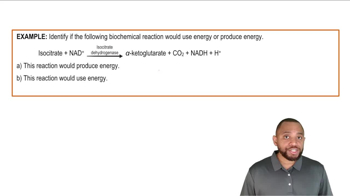Here are the essential concepts you must grasp in order to answer the question correctly.
Hydrogenation
Hydrogenation is a chemical reaction that involves the addition of hydrogen (H2) to an unsaturated compound, typically an alkene or alkyne, converting it into a saturated compound. This process is commonly used in organic chemistry to reduce double or triple bonds, resulting in alkanes. Catalysts, such as palladium, platinum, or nickel, are often employed to facilitate the reaction.
Recommended video:
Hydrogenation Reactions Concept 1
Reaction Products
In chemical reactions, the products are the substances formed as a result of the reaction. For hydrogenation reactions, the products are usually saturated hydrocarbons, which can be alkanes. Understanding the structure of the reactants is crucial for predicting the products, as the addition of hydrogen alters the molecular structure and bonding.
Recommended video:
Energy Production In Biochemical Pathways Example 1
Stereochemistry
Stereochemistry refers to the study of the spatial arrangement of atoms in molecules and how this affects their chemical behavior. In hydrogenation reactions, the stereochemistry of the reactants can influence the configuration of the products, particularly in cases where double bonds are involved. Recognizing whether the reaction leads to cis or trans isomers is essential for understanding the outcome of the hydrogenation process.
Recommended video:
D vs L Enantiomers Concept 1
 Verified Solution
Verified Solution



 1:22m
1:22m
